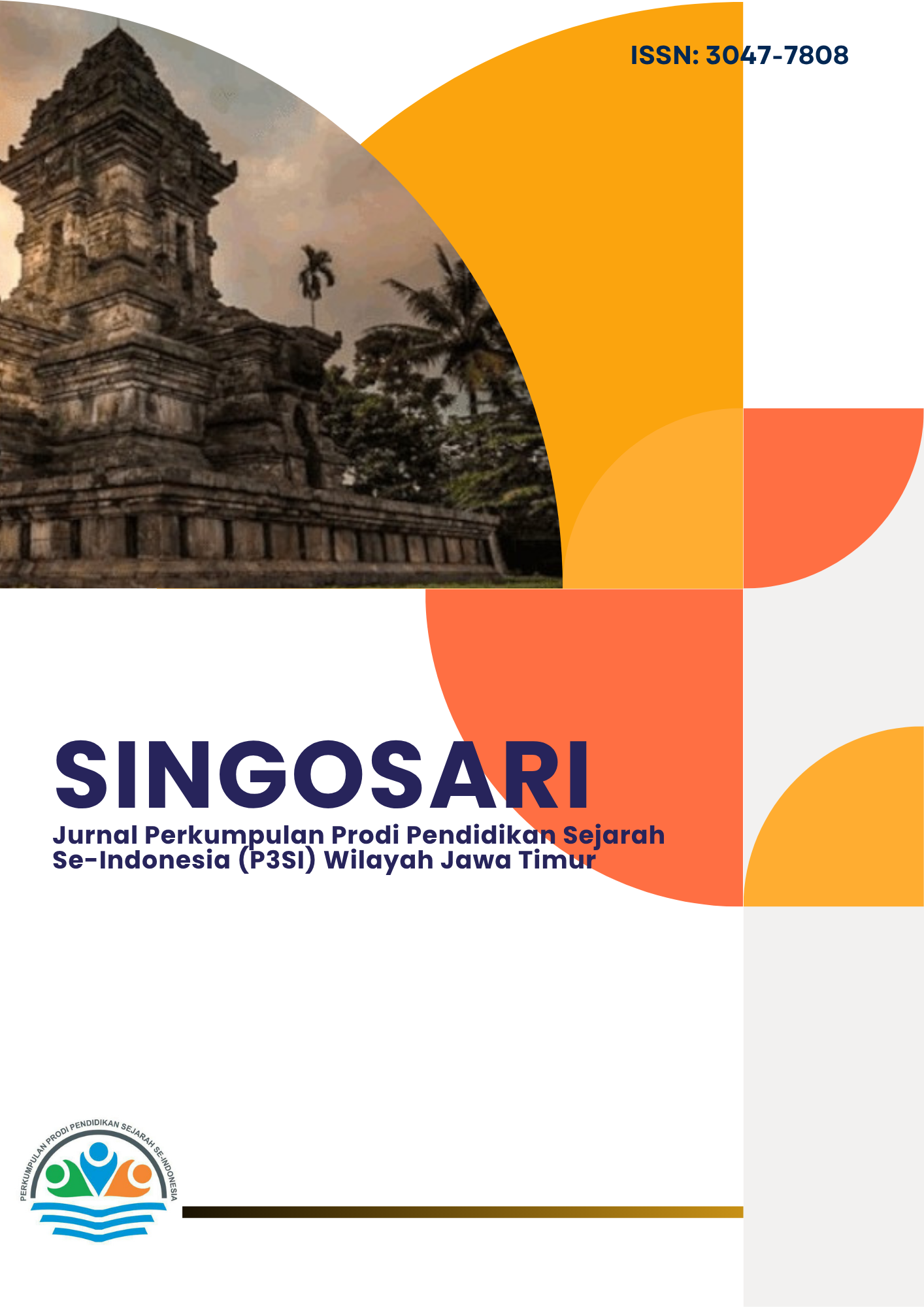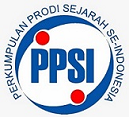Religious Tourism to the Grave of Kyai Faqih as a Tourist Attraction
DOI:
https://doi.org/10.63440/singosari.v2i2.71Keywords:
Religious Tourism, Kyai Faqih Tomb, Tourist AttractionAbstract
Kyai Haji Abdullah Faqih who is the inventor of the endog-endogan tradition in Banyuwangi. Kyai Abdullah Faqih was born in 1870 AD. According to the results of an interview with (great-grandson of Kyai Faqih Gus Reza) Kyai Faqih was born in 1873 in Pakis Hamlet, Balak Village. Kyai Haji Abdullah Faqih with his nickname Raden Mas Mudasir. Raden Mas Mudasir is a creative figure, actively studying the Quran since childhood, and likes to travel to seek knowledge (Jihad). He was born to Kyai Mangun Rokso and Nyai Rokso who were the fifth of seven siblings. In 1887, at that time Mudasir was still nine years old. He had decided to travel to seek knowledge to several Islamic boarding schools. One of them is at the Kyai Mangunrokso Islamic boarding school in Lumajang. After finishing in Lumajang, he continued to the pondok of Mbah Wali Sidiq Pasuruan. After Pasuruan, he continued to Bangkalan, in Bangkalan he shared a room with several scholars, namely K.H Hasyim Asyari, KH. Ma'ruf, KH. Manaf, and KH. Munawir Krapyak. They were all called the Pandawa Lima, because they were close friends. After that, from Bangkalan, he continued his studies to Semarang, then continued to the Mbah Jamil Buntet Islamic boarding school. Not only that, he sought knowledge directly in Mecca for 15 years. With the provision of knowledge, spirituality, mentality, experience, and the network of Nusantara scholars that had been established. After 15 years he returned in the 1900s, Kyai Faqih was encouraged to pioneer an Islamic boarding school in his village which became the beginning of Islamic boarding schools in Banyuwangi. And his first students came from the Osing area. He started this business in 1911, although he only obtained legality from the Dutch East Indies Government on August 17, 1917. However, the implementation of the Teacher Ordinance became an administrative challenge that often hampered the growth of Islamic boarding schools at that time. In 1900-1950, Kyai Faqih's works began to be numerous and widespread, one of which was endhog-endhogan or what is now known as Kembang Endhog. This traditional media of kembang endhog is a form of Kyai Faqih's struggle against the Dutch colonialists in Banyuwangi . He also fought back with art through endhog-endhogan which was spread by his students who at that time were studying at the pondok, as for the meaning of the endhog-endhogan tradition. White means Islam (faith in Allah SWT), the shell means protecting our Islam, yellow means ihsan (doing good in 3 things, namely the relationship between humans and God, the relationship between humans and humans and nature) this endhog flower must be stuck in a banana tree, because the banana tree has the meaning that once it bears fruit, the tree immediately dies, this can be interpreted that we as humans must be useful to others while we are alive. In addition, during his studies in Mecca, he collected several items, one of which was the lontar rengganis, and he also wrote works such as the Lontar Pandawa etc. which are still stored in the Islamic Boarding School. Not only that, many of his students became NU Banyuwangi Leaders at that time. He died on June 5, 1953 at the age of 83, buried next to his wife's grave which is next to the mosque of the Islamic boarding school he founded. The historical research method is also called the historical method, the method itself is a way, instruction, and implementation or technique to achieve a desired goal in making this research. According to the stages of the steps taken throughout the procedure, historical methods are divided into five groups, namely topic selection, source collection (HEURISTICS), source criticism (VERIFICATION), source interpretation (INTERPRETATION), and the last is writing (HISTORIOGRAPHY).
References
Ahmad Ferdi Abdullah. (2019). Blambangan People’S Resistance To Voc Year 1767-1773. Santhet: (Jurnal Sejarah, Pendidikan Dan Humaniora), 3(2), 46–55. https://doi.org/10.36526/js.v3i2.695
Fitri, R., & Ondeng, S. (2022). Pesantren Di Indonesia: Lembaga Pembentukan Karakter. Al Urwatul Wutsqa: Kajian Pendidikan Islam, 2(1), 42–54. https://journal.unismuh.ac.id/index.php/alurwatul
Hardian, N. (2018). Dakwah Dalam Perspektif. Jurnal Dakwah Dan Ilmu Komunikasi |, 5. https://ejournal.uinib.ac.id/jurnal/index.php/alhikmah/article/download/92/77
Hendra, T., Nur Adzani, S. A., & Muslim, K. L. (2023). Dakwah Islam dan Kearifan Budaya Lokal. Journal of Da’wah, 2(1), 65–82. https://doi.org/10.32939/jd.v2i1.2660
Kumparan. (2024). Makna Pohon Telur Maulid Nabi sebagai Tradisi Nusantara. https://kumparan.com/berita-hari-ini/makna-pohon-telur-maulid-nabi-sebagai-tradisi-nusantara-23VEc4u0Uf1
Maesaroh, N., & Achdiani, Y. (2018). Tugas Dan Fungsi Pesantren Di Era Modern. Sosietas, 7(1), 346–352. https://doi.org/10.17509/sosietas.v7i1.10348
Mahrisa, R., Aniah, S., Daulay, H. P., & Dahlan, Z. (2020). Pesantren Dan Sejarah Perkembangannya Di Indonesia. Jurnal Abdi Ilmu, 13(2), 34.
makna.pdf. (n.d.).
Nurmaria. (2017). BLAMBANGAN TERHADAP KOMPENI. Diss. Universitas Padjadjaran. Vol. 9 No.(September), 407–422.
Pratama, M. S. (2022). Identity of the East End City Identity of the East End City of Java Island: Endhog-Endhogan Tradition in Banyuwangi in Commeration of the Birthdayof Prophet Muhammad SAW. Santhet (Jurnal Sejarah Pendidikan Dan Humaniora), 6(1), 100–106. https://doi.org/10.36526/santhet.v6i1.1891
Robis, M., Fachrezzi, B. R., & Akhsan, A. (2020). Pengembangan Tradisi Geridhoan dan Endhog-Endhogan dalam Meningkatkan Daya Tarik Wisata Syariah melalui Festival GERIDHOGAN di Banyuwangi. Dinar : Jurnal Ekonomi Dan Keuangan Islam, 6(2). https://doi.org/10.21107/dinar.v6i2.6468
Setyawan, A. (2020). Dakwah yang Menyelamatkan: Memaknai Ulang Hakikat dan Tujuan Da’wah Islamiyah. Al-Adabiya: Jurnal Kebudayaan Dan Keagamaan, 15(02), 189–199. https://doi.org/10.37680/adabiya.v15i02.487
Sholeh Fikri Nasirudiin, & Siti Rugaiyah H. Tibek. (2013). Peranan Ulama Dalam Dakwah Semasa Penjajahan Tanah Melayu. Al-Hikmah, 5, 60–70.
Syafe’i, I. (2017). PONDOK PESANTREN: Lembaga Pendidikan Pembentukan Karakter. Al-Tadzkiyyah: Jurnal Pendidikan Islam, 8(1), 61. https://doi.org/10.24042/atjpi.v8i1.2097
Downloads
Published
Issue
Section
License
Copyright (c) 2025 Daud Hizbalhaq Addamawi, Maulana Iqbal Mahendra, Andryan Verly Dwi Pratama, Putri Nadiah, Diah Okta (Author)

This work is licensed under a Creative Commons Attribution-ShareAlike 4.0 International License.








